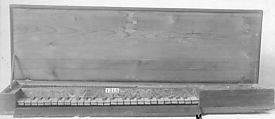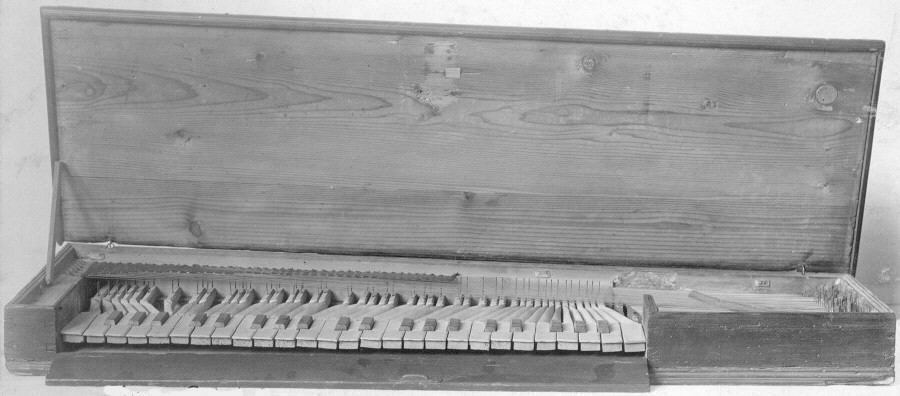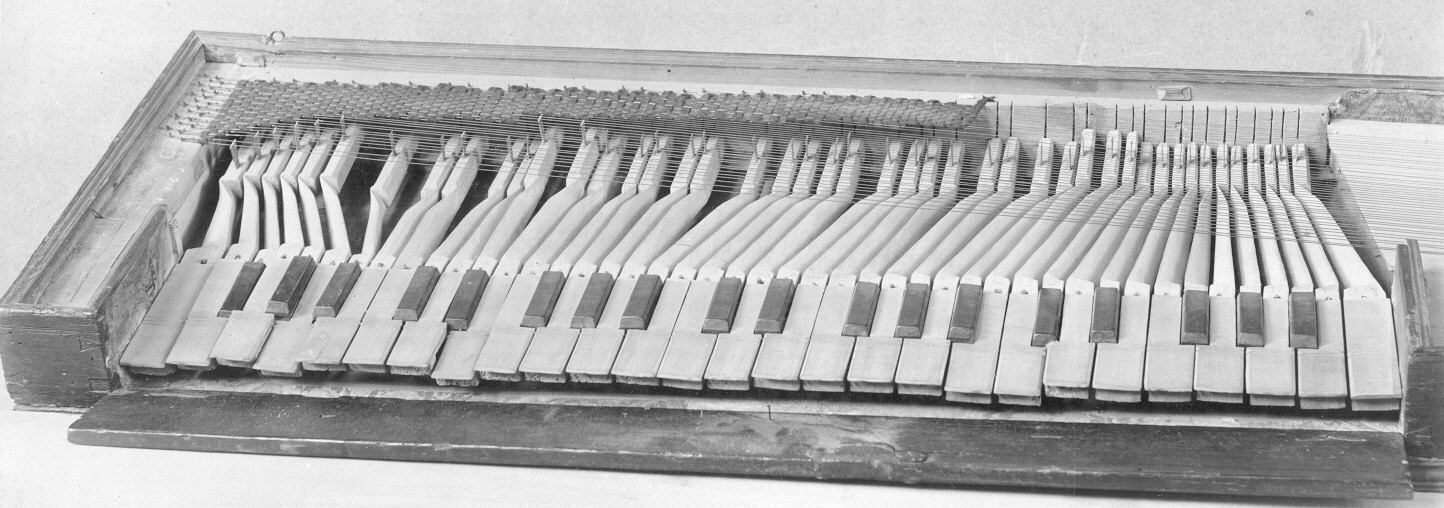Clavichord
Attributed to Johann Adam Türig Swiss
Not on view
Clavichords were built as far back as the early fifteenth century, and perhaps earlier. This most personal, simplest, and quietest of European keyboard instruments was the perfect vehicle for music pedagogy, keyboard practice, and composition throughout its 400-year history. The action of the clavichord is relatively simple: the finger depresses a key which, working as a lever, causes its opposite end to rise so that a metal tongue (or tangent) hits a metal string, causing it to resonate. When the key is released, the string is damped. The clavichord is very quiet compared to the harpsichord or piano because of the inefficiency of its sound production, with the tangent hitting the string at the end of its resonating length, rather than in the middle. The tangent mechanism, however, allows a player to achieve a range, albeit narrow, of louder and softer tones as well as special effects like bebung, a form of vibrato, so that the clavichord was and is valued for its intimate expressiveness. Earlier clavichords were fretted, that is, a single string might be used to create several different notes, depending on where a tangent struck it. Unfretted clavichords, with a single note per string, came into use in the late seventeenth century.
Technical description: Frettedclavichord, Range C/E-c3; softwood case with black-painted exterior and traces of marbled paper within; naturals covered with triple-scored, notched yellow-brown hardwood (not boxwood), heads 3.7 cm long, no keyfronts; accidentals of black-stained hardwood, 4.5 cm long; all keys pivoted in a more or less straight line about 9 cm from front of naturals; iron tangents; probably spruce soundboard has been repaired, bridge and ribs and possibly pinblock are not original, lid and key batten missing but shown in old photographs. (Laurence Libin 28 March, 1977)
Due to rights restrictions, this image cannot be enlarged, viewed at full screen, or downloaded.
This artwork is meant to be viewed from right to left. Scroll left to view more.




